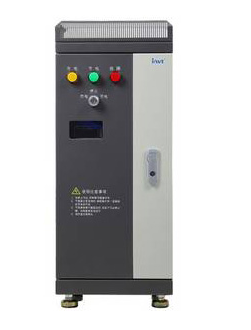Troubleshooting methods for frequency converter overload
1. Check if the motor is heating up
If the temperature rise of the motor is not high, the electronic thermal protection function of the Guangxi frequency converter should be checked first to see if it is pre-set reasonably. If there is still enough space for the frequency converter, the pre-set value should be relaxed; If the allowable current of the frequency converter is no longer sufficient and cannot be further relaxed, and according to the production process, the overload that occurs is considered normal overload, it indicates that the selection of the frequency converter is inappropriate. The capacity of the frequency converter should be increased and replaced. This is because when the electric motor is dragging variable or intermittent loads, as long as the temperature rise does not exceed the rated value, it is allowed to overload for a short period of time (a few minutes or tens of minutes), while the frequency converter does not allow it. If the temperature rise of the motor is too high and the overload occurs is considered normal overload, it indicates that the motor is overloaded. At this point, the first consideration should be whether the transmission ratio can be appropriately increased to reduce the load on the motor shaft. If possible, increase the transmission ratio; If the transmission ratio cannot be increased, the capacity of the motor should be increased.

2. Check if the three-phase voltage on the motor side is balanced
If the three-phase voltage on the motor side is unbalanced, the three-phase voltage at the output end of the frequency converter should be checked again. If it is also unbalanced, the problem lies inside the frequency converter. The inverter module and its driving circuit of the frequency converter should be checked.
If the voltage at the output end of the frequency converter is balanced, the problem lies in the wiring from the frequency converter to the motor. All terminal screws should be checked to ensure they are tightened. If there are contactors or other electrical appliances between the frequency converter and the motor, it is also necessary to check whether the wiring terminals of the relevant appliances are tightened and whether the contact condition of the contacts is good.
If the three-phase voltage on the motor side is balanced, the operating frequency at the time of tripping should be understood. If the operating frequency is low and vector control (or no vector control) is not used, the U/F ratio should be reduced first; If the load can still be driven after reduction, it indicates that the preset U/F ratio is too high and the peak excitation current is too high. The current can be reduced by reducing the U/F ratio; If the load cannot be carried after reduction, it should be considered to increase the capacity of the frequency converter; If the frequency converter has vector control function, vector control method should be adopted.
3. Check if the frequency converter malfunctions
When the cause is not found after the above inspection, it should be checked whether it is a misoperation. The method of judgment is to measure the output current of the frequency converter with an ammeter under light or no load conditions, and compare it with the operating current value displayed on the display screen. If the current reading displayed on the display screen is much larger than the actual measured current, it indicates that there is a large error in the internal current measurement of the frequency converter, and "overload" tripping may be a misoperation.
(Disclaimer: The article is sourced from the internet and does not represent the views or positions of our website. The copyright belongs to the original author and source. If there is any infringement or objection, please contact us for correction or deletion.)
(声明:文章来源于网络,不代表本站观点及立场,版权归原作者及原出处所有,若有侵权或异议请联系更正或删除。)
Previous article:Design considerations for variable frequency control cabinets
Next article:The impact of variable frequency speed regulation on ordinary asynchronous motors

